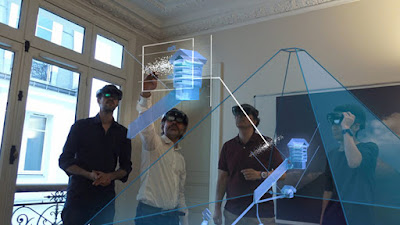That's right i said it Challenge for the week if you are an Artist,Writer, whatever the case. If you are a writer do 10 Pages a day for the next week and prove it by Saturday the 25th. That is 70 pages by one week. Now here is the caveat you have to do it in the time frame of your normal day if you cant than try using an hour by hour schedule to see what you are doing that is wasting some time. Nuff said we are all adults here we go!
Featured Posts (3520)
Also, I launched my comics line last month with WINTERMAN COMICS #1
#2 drops at the end of this month and so on. In 2018 three new titles will arrive in a very interesting way.
The comics are sold digital-only on AMAZON (for now. other outlets when i get some free time to make the appropriate files)
Hello Peeps,
Currently I'm in the final stages of applying for a grad program at Michigan State called Literary Neuroscience. This program has had "general" internet info circulating for maybe only 7 years, with arguably a location of no more than 5 schools in the whole USA. After taking the GRE today and sending out my scores to these scores, I was curious in wondering, "Are there any predominantly/historically black schools that house programs with similar combined studies of literature and cognition?" Even though the term "literary neuroscience" is relatively new, I'm sure the concept isn't. As an old saying goes, "There is nothing new under the Sun." Plus, one of thee world's foremost conventional experts on Brain Surgery & Neuroscience is renown doctor/author, Ben Carson, also from Detroit, MI. If anyone has answers and/or feedback to this vital question, let me know. And even if I do end up in Michigan, East Lansing is likely to be somewhat of a post-gentrified Nu Detroit, where in the next 5-10 years, they'll be no shortage from people of color.
Happy Black Friday Shopping Season - AL Bey
okay.
It's been a while so i think is should start out with this.
Next year, in addition to what we all expect to be the miraculous and life-changing BLACK PANTHER feature film, there will also be a new version of the Marvel animated AVENGERS series, featuring Black Panther as well.
When I say "feature" I really mean "focus on" because this next season is so much about Black Panther that they retitled the show to make it clear.
For four seasons the show was called MARVEL'S AVENGERS: ASSEMBLE. NEXT season it will be called MARVEL'S AVENGERS: BLACK PANTHER'S QUEST.
I'm mentioning it here for two reasons.
1) Folks around here need to watch the hell out of this show. It's a totally different vibe than what's gone before on these TV series.
2) The reason I know this is because I'm the head writer. I'm not legally allowed to say anything more than this at this time.
Working for Marvel is like working for the CIA. But I thought I'd drop some info now so you guys can get prepped. By "prepped" I mean "Buckle up."
Here's some of the redesigned characters from the show.
That's it for now. come find me at GAME OF THORNES on twitter if you want to stay up on it or, just watch this space.
https://www.facebook.com/A-Christmas-Carol-called-Chains-146797222605319/
 |
| Illustration of the ten-qubit processor (Courtesy: Chao Song et al/ Physical Review Letters) |
Topics: Nanotechnology, Quantum Computer, Quantum Mechanics, Superconductors
Superconducting quantum computer achieves 10-qubit entanglement
Marric Stephens, Physics World
 |
| A simulation of the dark matter distribution in the universe 13.6 billion years ago. ILLUSTRATION COURTESY VOLKER SPRINGEL, MAX PLANCK INSTITUTE FOR ASTROPHYSICS, ET AL, NatGeo |
Topics: Astrophysics, Dark Matter, Neutrons, Research, Theoretical Physics
Hunt for dark matter is narrowed by new research, Phys.org More information: C. Abel et al. Search for Axionlike Dark Matter through Nuclear Spin Precession in Electric and Magnetic Fields, Physical Review X (2017). DOI: 10.1103/PhysRevX.7.041034
 |
| Penn researchers are collaborating to study how giant clams convert sunlight into energy, which could lead to more efficient production of biofuel. Photo credit: Malcolm Browne |
Topics: Biochemistry, Green Energy, Materials Science, Nanotechnology, Physics, Solar Power
Penn Researchers Working to Mimic Giant Clams to Enhance the Production of Biofuel Ali Sundermier, Evan Lerner, University of Pennsylvania News
Well since the last time I wrote, I went ahead with school. I sadly ended up flunking out. I was made to feel like I didn't belong there. I tried to open up and do different things and it just didn't work. This school is not at all what i thought it would be. They do not welcome writers like me, meaning students that want to be authors. They are more for tv, and movie type of writers.
I was depressed for a while and stopped writing. I was trying to find a better job so I wasn't so stressed. Maybe a year later I'm back to writing again. I write a little everyday thanks to my oldest daughter and Watt Pad. I'm still at my job, which i dont like anymore, so Im in school again, this time its affordable, and they encourage the kind of writer I am.
I am still very much into science fiction and fantasy. I had the pleasure of reading a few samples of books from Tanarive Due. I have also found a bit of inspiration from a few different people who have read my work. Now to find a way to make writing my career. Not quite sure how to start but if this is for me, everything will work out.
Topics: Laser, Materials Science, Optical Physics, Quantum Mechanics
Need Entangled Atoms? Get 'Em FAST! With NIST’s New Patent-Pending Method
Paper: Z. Eldredge, Z.-X. Gong, J. T. Young, A.H. Moosavian, M. Foss-Feig and A.V. Gorshkov. Fast State Transfer and Entanglement Renormalization Using Long-Range Interactions. Physical Review Letters. Published 25 October 2017. DOI: 10.1103/PhysRevLett.119.170503
 |
| Schematic of the sandwich tunnelling electrode structure functionalized with RGD peptide, with a human integrin &alphaVβ3 protein in the junction gap. Courtesy of Nano Futures. |
Topics: Biology, Biochemistry, Chemistry, Nanotechnology
Unexplained huge protein conductances hint at evolution, Anna Demming, Nanotechweb.org
Topics: History, Modern Physics, Particle Physics
Muons reveal hidden void in Egyptian pyramid, Hamish Johnston, Physics World
https://www.facebook.com/A-Christmas-Carol-called-Chains-146797222605319/
 |
| The Marius Hills Skylight, as observed by the Japanese SELENE/Kaguya research team. (Image: NASA/Goddard/Arizona State University) |
Topics: Moon, NASA, Planetary Science, Science Fiction, Space Exploration
 |
| Philadelphia is shown inside a theoretical lunar lava tube. (Image: Purdue University/David Blair) |
Scientists Just Found the Perfect Spot to Build an Underground Colony on the Moon George Dvorsky, Gizmodo
 |
| Image Source: Link below |
Topics: Civil Rights, Human Rights, Science, Research
AAAS Adopts Statement Binding Scientific Freedom with Responsibility Anne Q. Hoy, AAAS
Woke up to a brisk 31 degrees in Nashville today. I had forgotten what winter felt like for the last 5 years in Florida now is the wake up call. Wake up call is a good phrase to use in this case. Ask yourself what was your wake up call? How did it occur and better yet what have you done about it? I realized today that i have actually been a member of this site since 2012 and I still believe it was a great idea to join this site. I haven't really been on here and I can legitimately come up with more excuses than Martha Stewart has recipes on why i haven't done anything yet but hey now that's out of the way i can get down to business again. I will be back to punishing this keyboard with work and post on here from now on. I have 7 books to write and number one needs to be finished by March 2018. Hey I have a question and feel free to answer or give your opinion i look forward to hearing them. See i have this plan and as of now it is going into motion what would it take to get you as an artist, animator, publisher, Writer and creator of worlds to actually work as one? Because i don't know about you but i am out to change the world and wreck certain people's nasty agendas and thoughts on who we are and what we should be portrayed as. I am done with the talk now its time to put in the work and show the world at large just how talented we are and most of all show them how to we are leaders as well. So here we go and strike up the band i am now declaring all out war on PROCRASTINATION ON THIS SITE and not doing what we dream of doing and have been dreaming of forever. We all have goals and dreams but the one thing we are missing is action. Me included oh no I am in no means excluded from this as a matter of fact I include myself on this so there it is. OK now.....Your Move!

